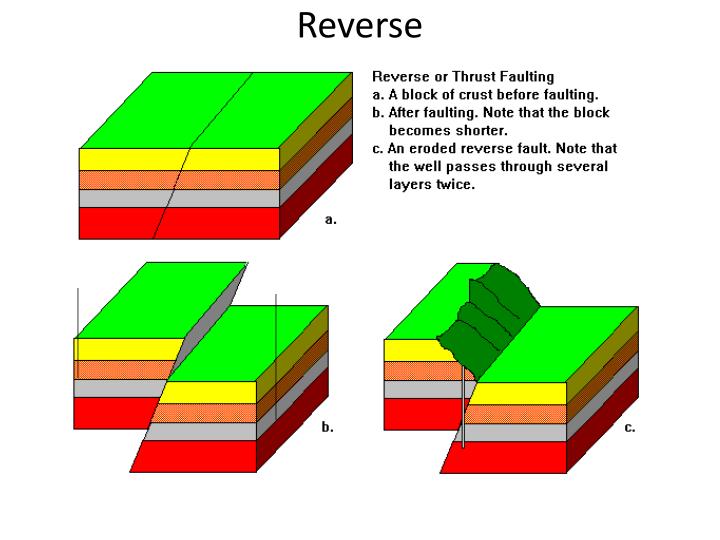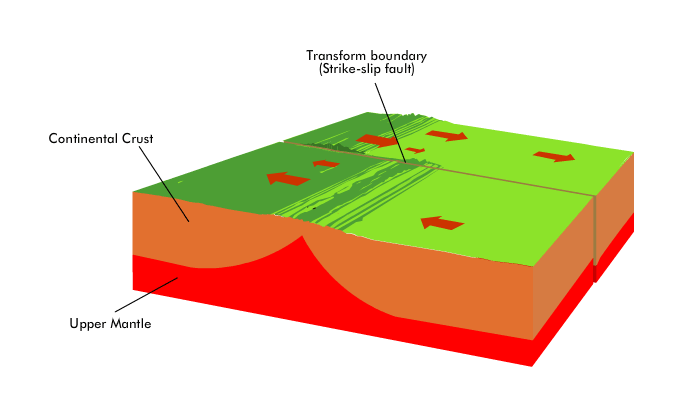

Transform faults associated with subduction zones are much less common, and destructive plate boundaries do not, in general, show the segmented structure so common in constructive boundaries. Plate A is moving towards the east while plate B is moving towards the west.įigure 20 Block diagram showing how the topographic contrast across an ocean fracture zone (transform fault) develops as a consequence of lithospheric age as opposed to differential vertical movement.


In Figure 19, the fault trace marks the boundary between plates A and B. Transform faults are seismically active - but only where two different plates are adjacent to one another. Generally, oceanic transform faults occur at right angles to spreading ridges and, therefore, their orientation is indicative of the direction of plate motion. East Pacific Rise) between 10°N and 10°S, and 40°S and 55°S respectively, or manifest as shorter segments along the Atlantic Ocean spreading ridge between 0°and 40°S. Examples can be easily seen on the Cocos-Nazca Ridge (also known as the Galapagos Spreading Centre), and the Pacific Ocean spreading ridge (i.e.
#At transform plate boundaries series
Accordingly, this type of ocean transform fault forms an integral part of constructive plate boundaries, and their position is made obvious by the jagged shape of parts of the ocean-ridge system that are split into several segments by series of so-called fracture zones. Transform faults linking two constructive boundaries are the most common, and account for the displacements between adjacent segments of mid-ocean ridges. Those that link a destructive boundary with a constructive boundary. Those that link two destructive boundaries Those that link two segments of a constructive boundary Transform faults connect the end of one plate boundary to the end of another plate boundary, so there are potentially three types of transform fault: There are no volcanoes at a conservative plate boundary.3.8 Conservative plate boundaries and transform faultsĬonservative plate boundaries and transform faults occur when plates slide past each other in opposite directions, but without creating or destroying lithosphere. The earthquakes at a conservative plate boundary can be very destructive as they occur close to the Earth's surface. When the pressure is released, it sends out huge amounts of energy causing an earthquake. Pressure builds up because the plates are still trying to move. As the plates try to move, friction occurs and plates become stuck. Conservative plate boundariesĪt a conservative plate boundary, the plates slide past each other in opposite directions, or in the same direction but at different speeds. Landforms at a divergent plate boundary include ocean ridges, eg the Mid-Atlantic ridge (where the Eurasian plate and the North Atlantic plate are moving apart from each other under the Atlantic Ocean), rift valleys eg the East African Rift Valley and shield volcanoes. Rising magma can also create shield volcanoes.

The movement of the plates over the mantle can cause earthquakes. When this happens the magma from the mantle rises up to make (or construct) new crust. Divergent plate boundariesĪt a divergent plate boundary - also known as a constructive plate boundary, the plates move apart from one another. Earthquakes can occur at collision boundaries. If two continental plates collide, neither can sink and so the land buckles upwards to form fold mountains. The volcanic eruptions are often violent, with lots of steam, gas and ash. The magma escapes through weaknesses in the rock and rises up through a composite volcano, also known as a stratovolcano. The pressure of the magma builds up beneath the Earth's surface. When the plate sinks into the mantle it melts to form magma. This happens because the oceanic plate is denser (heavier) than the continental plate. This is known as subduction and results in the formation of an ocean trench. The plates move towards one another and this movement can cause earthquakes and volcanoes.Īs the plates collide, the oceanic plate is forced beneath the continental plate. Convergent plate boundariesĪ convergent plate boundary also known as a destructive plate boundary, usually involves an oceanic plate and a continental plate. The point at which two plates meet is called a plate boundary or margin.


 0 kommentar(er)
0 kommentar(er)
